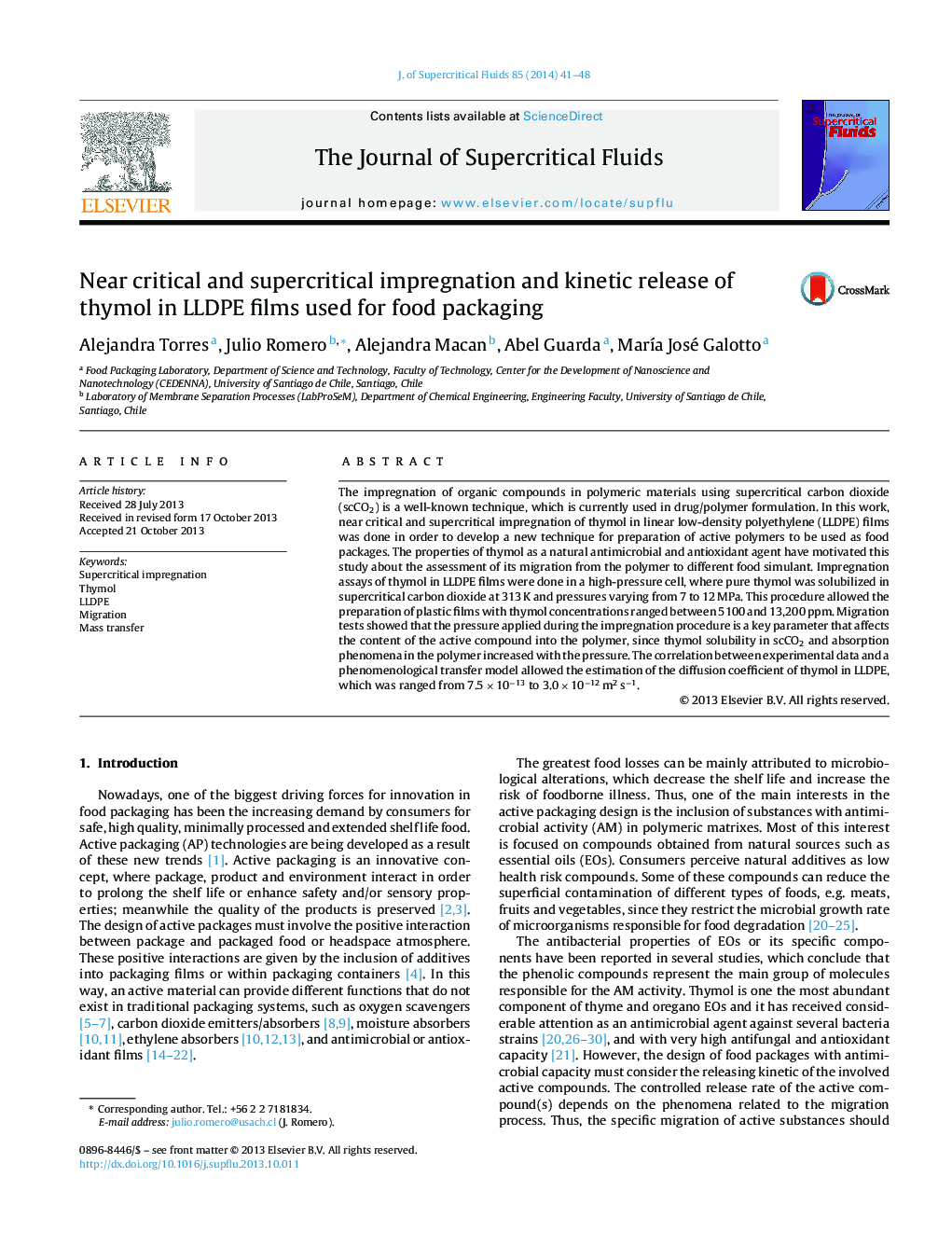| Article ID | Journal | Published Year | Pages | File Type |
|---|---|---|---|---|
| 230698 | The Journal of Supercritical Fluids | 2014 | 8 Pages |
•Thymol was impregnated in LLDPE films using sub and supercritical CO2 as impregnation solvent.•Impregnation pressure is the key parameter that affects the content of thymol in the polymeric films.•Supercritical impregnation ensures a high incorporation of thymol in LLDPE without structural modification.
The impregnation of organic compounds in polymeric materials using supercritical carbon dioxide (scCO2) is a well-known technique, which is currently used in drug/polymer formulation. In this work, near critical and supercritical impregnation of thymol in linear low-density polyethylene (LLDPE) films was done in order to develop a new technique for preparation of active polymers to be used as food packages. The properties of thymol as a natural antimicrobial and antioxidant agent have motivated this study about the assessment of its migration from the polymer to different food simulant. Impregnation assays of thymol in LLDPE films were done in a high-pressure cell, where pure thymol was solubilized in supercritical carbon dioxide at 313 K and pressures varying from 7 to 12 MPa. This procedure allowed the preparation of plastic films with thymol concentrations ranged between 5100 and 13,200 ppm. Migration tests showed that the pressure applied during the impregnation procedure is a key parameter that affects the content of the active compound into the polymer, since thymol solubility in scCO2 and absorption phenomena in the polymer increased with the pressure. The correlation between experimental data and a phenomenological transfer model allowed the estimation of the diffusion coefficient of thymol in LLDPE, which was ranged from 7.5 × 10−13 to 3.0 × 10−12 m2 s−1.
Graphical abstractFigure optionsDownload full-size imageDownload as PowerPoint slide
